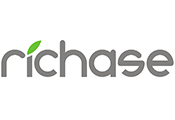When should rice be fertilized? The main fertilization method and what fertilizer should be used for top dressing
Rice is one of the main food crops in our country. Rice is grown all over the world. For high yield, additional fertilizer is needed. So, when should rice be fertilized? Do you know the main method of fertilizing rice? What kind of fertilizer is used for top dressing? Let's take a look with the editor below.
When is the rice fertilized?
1. The amount of fertilizer. The amount of rice fertilization can be calculated based on the expected yield, the rice's nutrient requirements, the supply of soil nutrients, and the nutrient content and utilization rate of the fertilizer applied.
2. Fertilization period. It can be divided into four stages: base fertilizer, tiller fertilizer, ear fertilizer, and grain fertilizer (depending on the growth potential of rice). The fertilization time and distribution ratio of each period are as follows.
(1) Base fertilizer. Before the rice is transplanted, it is applied to the soil, and the base fertilizer accounts for 40% of the total chemical fertilizer, combined with one-time harrowing application. On the basis of applying farmyard manure, one set of soil ratio is generally added per acre.
(2) Tillering fertilizer. The tillering period is an important period for increasing the number of plants, and it is applied half a month after transplanting or seedling. Flushing with water per acre yields a bucket of fruit, and foliar spraying of Huaguo Doctor Fruit can supplement trace elements with multiple elements and promote tillering.
(3) Ear fertilizer. It is divided into flower promoting fertilizer and flower protecting fertilizer. Flower promoting fertilizer is applied from the stage of cob differentiation to spikelet differentiation. Nitrogen application at this stage can increase the number of spikelets per panicle. The flower-preserving fertilizer is applied slightly before the meiotic stage of pollen cells, which has the effect of preventing the degradation of spikelets and increasing the accumulation of stem and sheath storage. Add one set of soil ratio for each acre.
(4) Grain fertilizer. Grain fertilizer has the function of extending leaves, improving photosynthetic intensity, increasing grain weight and reducing empty grains. Especially for the rice fields with small populations and the varieties with large panicles and long filling period, it is recommended to use a small amount of urea, but nitrogen must not be biased to avoid being greedy for green and late maturity. Flush Shidefuer drip irrigation fertilizer 10-15 kg per acre.
Main fertilization methods for rice
1. First light ~ medium weight ~ post-replenishment method: adequately apply base fertilizer and tiller fertilizer, rationally use ear fertilizer, and appropriate grain fertilizer to achieve early growth and stability, no madness in the early stage, promotion of flowers in the middle stage, and no premature aging in the later stage. On the basis of ensuring sufficient number of ears, this method also focuses on large ears and grain weight. Southern single-season late rice and late-maturing mid-season rice mostly use this fertilization method.
2. Front stability ~ attacking China and France: This method saves fertilizer, stabilizes and produces high yields. The main purpose is to increase the effective tillering rate, increase the seed setting rate, increase the grain weight and strive for high yield. Features: strong plants and large tillers in a small population, early control of tillers; strong roots on the stalks, large ears in the middle attack, seed setting rate and ear weight in the middle and late attacks.
3. Pre-promoting ~ mid-control ~ post-replenishment method: This method is similar to the "V"-shaped fertilization method, re-applying base fertilizer (over 80% of the total) and re-applying tillering fertilizer, and applying granular fertilizer as appropriate to achieve the "early stage" , Stable in the mid-term and robust and strong in the later period. This fertilization method is used in the northeast rice area, most of the early rice in the south, and the wheat stubble rice in the North China. The disadvantage is that the early growth is too prosperous, which is easy to cause the field to be sheltered, and the pests and diseases are serious.
4. Pre-promoting fertilization method: On the basis of plantar fertilizer, early application and reapplication of tillering fertilizer, especially nitrogen fertilizer, can promote the early growth of tillers and ensure the increase of tillers and more ears. The base fertilizer accounts for 70% of the total fertilizer (nitrogen fertilizer accounts for 60% to 80% of the total nitrogen), and the remaining 30% fertilizer is all applied after transplanting. This method is suitable for rice areas where rainfall is concentrated during rice growth, fertilizers are easily lost, and low temperature and low sunshine often occur. The base fertilizer is mainly farmyard manure.
5. One-step fertilization method of bottom fertilizer: apply all fertilizers at one time during field preparation to mix soil and fertilizer. It is suitable for rice fields with strong fertility retention such as clay and heavy loam, and the fertilizer source is sufficient. Using this method, compared with base fertilizer plus tiller fertilizer and base fertilizer plus ear fertilizer, the nitrogen uptake rate of rice plants is increased, the tiller is faster, the ears are more, the light transmittance between rows is high, and the yield is increased by 3.6% to 17.9%.
6. Soil testing formula fertilization method: Soil testing formula fertilization is to coordinate the relationship between crop yield, agricultural product quality, soil fertility and crop environment. According to the law of crop fertilizer requirement, soil fertilizer characteristics and fertilizer effect, organic fertilizer and inorganic fertilizer are used. A set of fertilization technology system that combines the necessary nutrient elements and trace elements in an appropriate proportion and adopts the corresponding fertilizer application methods. This method can scientifically match various nutrient ratios and application amounts based on the results of soil nutrient determination and the amount of various nutrients needed for the life of the crop to provide a reasonable supply to meet the nutrients needed for the life of the crop to achieve the purpose of increasing production and efficiency; reducing unnecessary Fertilization, reduce costs, reduce environmental pollution, and reduce soil compaction and pests.
What kind of fertilizer is used for topdressing rice
The top dressing is mainly nitrogen fertilizer. If the total amount of top dressing does not exceed 30 kg of ammonium sulfate per 667 square meters, the approximate fertilizer distribution is as follows: ① Surface fertilizer. Apply 3 to 5 kg of ammonium sulfate per 667 square meters when harrowing the field before transplanting. ②Tillering fertilizer. 10-15 days after transplanting, apply 5-10 kg of ammonium sulfate per 667 square meters. ③ Ear fertilizer. In the early stage of jointing, apply 8-10 kg of ammonium sulfate per 667 square meters. ④ Grain fertilizer. Apply 3 to 5 kg of ammonium sulfate per 667 square meters 7 days before heading.


